Interview with artist Perrion Hurd
Perrion Hurd was born in Hughes, Arkansas and grew up in Memphis, Tennessee. He is an illustrator, painter, printmaker, and muralist and his visual language is what he calls 'Afrofuturistic Geometric Symbolism.' He has exhibited his work throughout the South and is collected nationally and internationally. Of note, Perrion is the 2020 Signature Artist for the Mosaic Templars Cultural Center in Little Rock, Arkansas. He has recently completed exterior mural banners and has an exhibition 'Wonders & Signs' that documents his artistic journey. Perrion’s work has been featured in the Arkansas Democratic-Gazette, the Arkansas Times, and Arkansas Life magazine. He is the founder of HurdWiredStudios and his work can be view there and on his Facebook and Instagram pages - or email him. The images appearing in this post are courtesy of Ebony L. Blevins Photography.
Art & Science, 20ft x 16ft, latex on vinyl (click for expanded view)
AAS: You were born in Hughes, Arkansas but lived much of your life in Memphis, Tennessee. What brought you to Little Rock?
PH: The plan in my mid-20's was to become a pathologist. I started out going to the University of Memphis while working in the Histology Department of Methodist Central Hospital. I was a 'tech/clerk,' and in my department we catalogued and processed all types of biological specimens that were brought to us from the surgery departments in the hospital and from clinics affiliated with the hospital. During my time there, I started studying and drawing anatomical sketches that opened my mind more to the connections between art and science.
I had moved to Bentonville from Memphis in 2006 for employment opportunities, and I met my wife there. I found some success selling paintings to friends, and then I found my dream job at Fusion Fine Art Gallery in Bentonville, and worked there for several years. It was great. My wife and I moved to Little Rock in 2011 because of the gallery’s closing due to the economic changes in 2008, and our employers at the time had available spots for employment here.
AAS: Have you always wanted to be an artist?
PH: Kind of, but not always. It can be rough for young people growing up with few role models to look up to and model themselves after. When I was a kid, I just knew that I wanted to be creative and have interesting stories to tell people about my life and my experiences. I gave myself a list of ‘10 Things To Be When I Grew Up’. At one point in my life I wanted to be an astronaut. At another, I wanted to be a backup dancer for Madonna on her Blonde Ambition tour! As I got older and I realized that life was bigger than a list of kid's dreams and when I started to have adult responsibilities that I was accountable for, I began to lose hope and settled for the reality of a desk job and a steady paycheck. Somehow...number 9 on the list… came and reignited me in my late 20's.
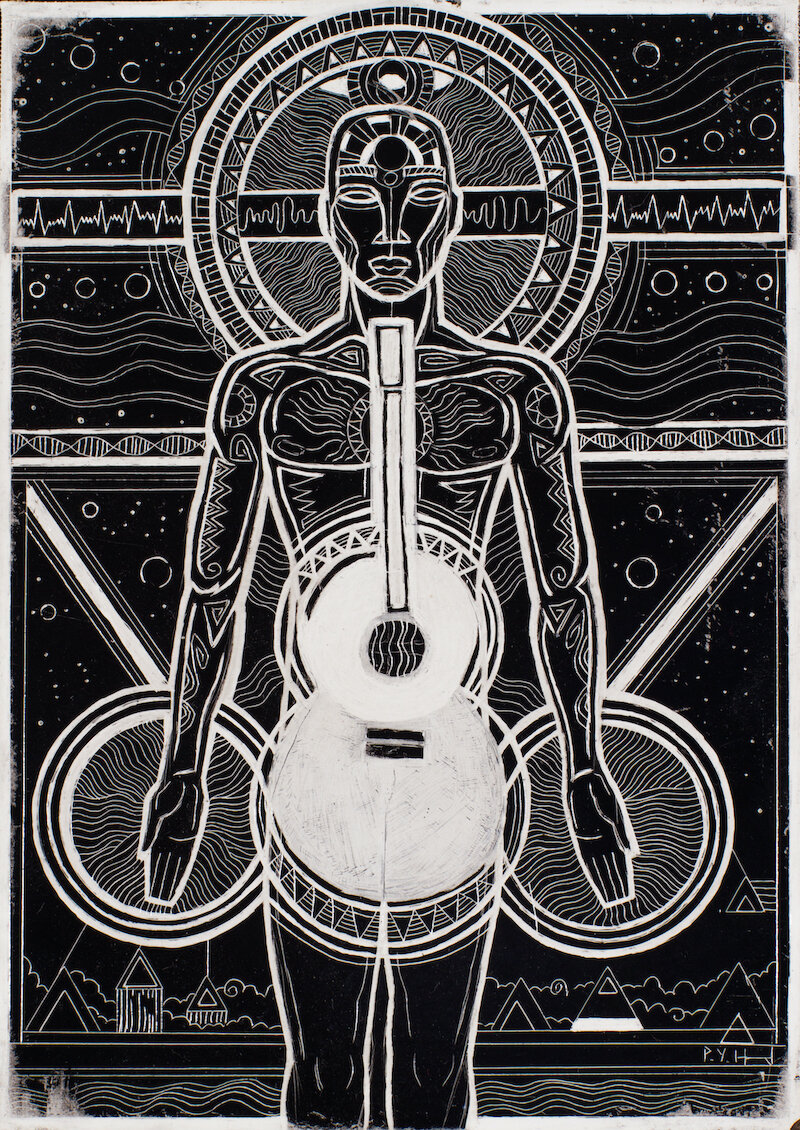
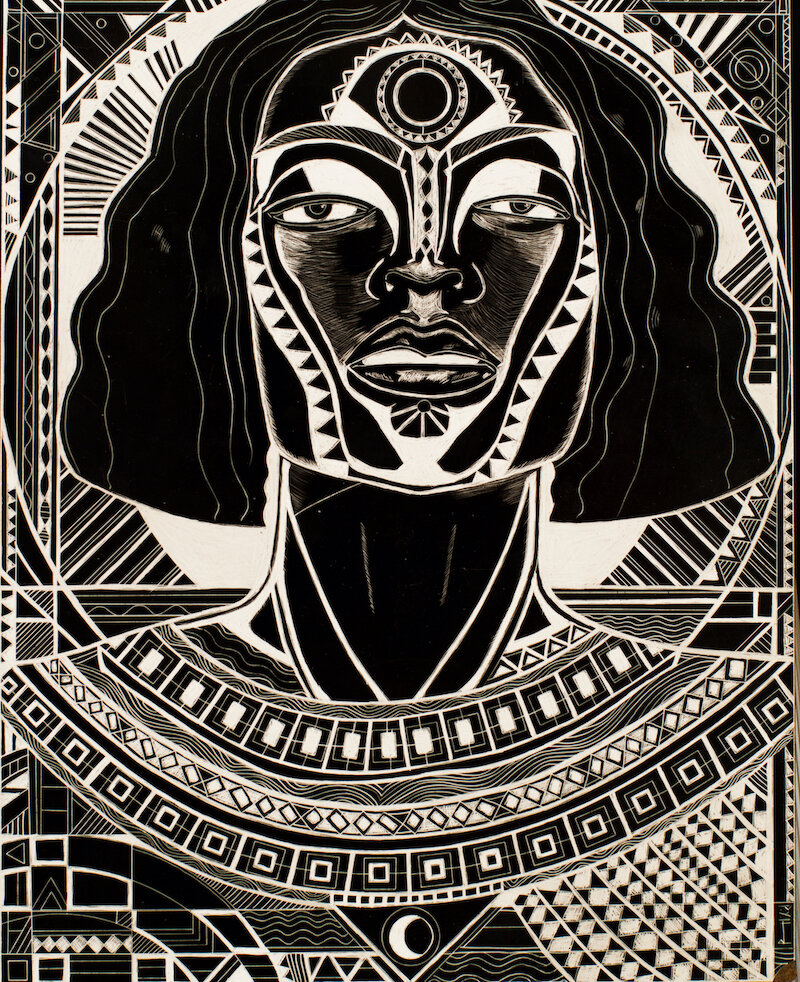
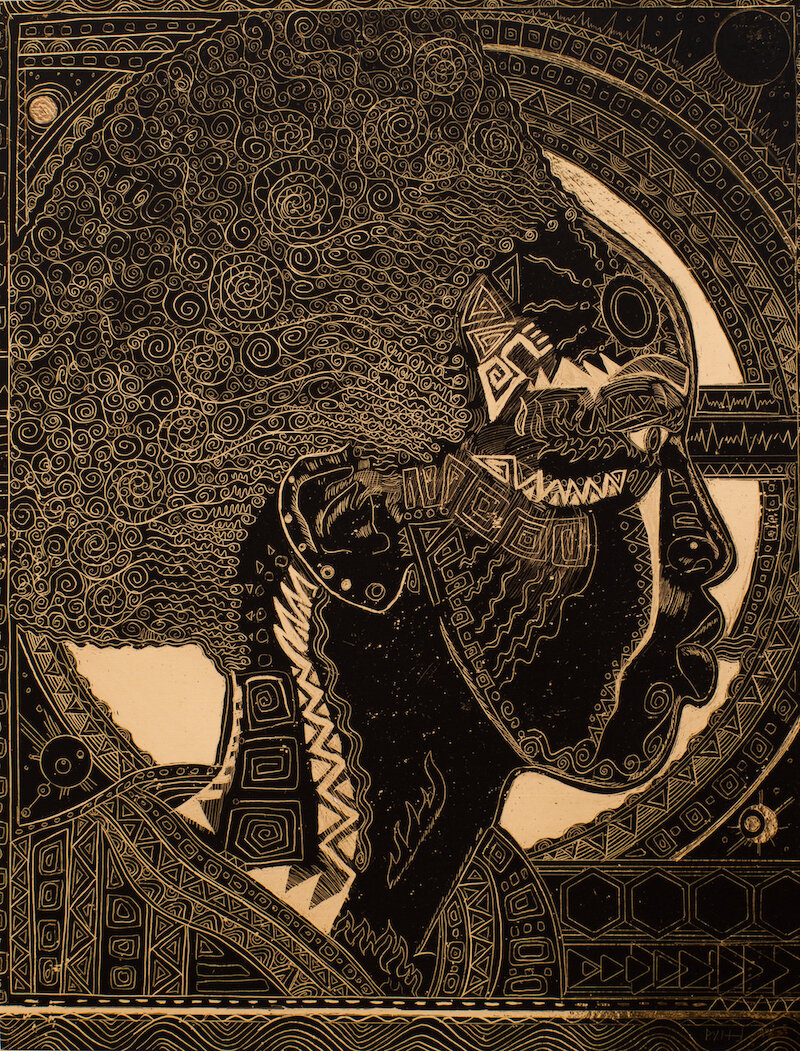
AAS: You describe yourself as a self-taught graphic artist and printmaker. Who were your influences and role models?
PH: I have had lots of influences and role models along the way – far, far too many to name here. I believe that in our own way, we are all teachers and students of each other. People teach us two things: what to do and what not to do, if we allow ourselves to step back a bit and be open enough to receive what people are teaching us. As far as the 'self-taught' part of my being an artist, yes. I taught myself to look at other people’s art, then analyze it down to the finest detail, and try to do my version of it. It was like putting myself through art school because I wanted to be an artist and find my own voice and visual language and techniques. The only original thing about my art, and I would argue about any art, is what the individual artist brings out of themselves ... their 'hand', 'brushstrokes', etc.
Love, 10ft x 92ft, latex on vinyl (click for expanded view)
AAS: Much of your work celebrates African American culture and experiences and is filled with hope and joy. Describe what you call the 'Afrofuturistic Geometric Symbolism' found in your art.
“…[as a kid] at one point I wanted to be an astronaut – at another I wanted to be a backup dancer for Madonna on her Blonde Ambition tour!”
PH: I grew up in an all African American environment in Memphis during the 70's and there were lots of positive Black images that were all over the neighborhood. Murals, album covers, posters...go back and look at those. It is a beautiful aesthetic. The Afro-Positive Black images. The Futuristic: drawing from my past influences and putting them into my present and future works. The Geometric Symbolism: think hieroglyphs, sacred geometry, the Vitruvian Man – it's all connected.
AAS: Oh, yes, album covers in the 70’s (I know them well) – I can see the influences of Stevie Wonders' Songs in the Key of Life album cover! I see your imagery as bold and celebratory. Is that what you hope the viewer sees and feels?
Education, 15ft x 16ft, latex on vinyl (click for expanded view)
PH: Yes! You got it! Stevie Wonder. Earth, Wind & Fire, Jimi Hendrix, George Clinton, Parliament Funkadelic, Bootsy Collins...STAX...funk, soul and disco albums ...that is the music that I grew up listening to when I was a kid in Memphis. I'd obsess over those album covers for hours and try to copy them. Childlike wonder. That's the feeling that I hope to communicate to the people who see my work.
In 1978, I was influenced by the drawing styles and artists of the time, Leo and Diane Dillon book covers, Gerald McDermott, Ralph Bakshi. I spent a lot of time at the library down the street from my house. I also had my mind blown in 1981 with the Heavy Metal movie, and that made me start collecting Heavy Metal Magazine in secret. I was 9. My Mother did not approve at all. So it was back to Marvel and D.C. comics until I became of age. Those pictures and drawings, and the murals in my neighborhood were the images that I was most influenced by during my developmental years, and they stuck. In my early teens, I became influenced by Jean-Michel Basquiat, Kerry James Marshall, Patrick Nagel, Amedeo Modigliani and Picasso. The last three for obvious reasons. (wink).
Eventually in my 20s, I started studying the classical and modern artists that I liked and tried to copy their styles with varying degrees of success. Some I could copy very well, but I knew that it would never ever satisfy me. It felt like stealing, so I stopped. I felt less bad and guilty about copying when my art instructors in college insisted that "That's what all artists do."
AAS: Talk about your exhibition Wonders & Signs at the Mosaic Templars Cultural Center in Little Rock. How did it come about?
PH: I had done one of the murals for the DrainSmart program by the Audubon Society here in Little Rock in 2015, and Mosaic Templars was hosting the second 'meet the artists' events in 2017. I had the opportunity to meet Christina Schutt, the director of Mosaic Templars and soft-pitch my idea of replacing the faded banners on the outside of the building with...something. Last year I was called in to produce and submit drawings of my concept. It took three months to produce several versions and we all eventually settled on the direction and which way to go. It took a little over five months to produce the hand-painted banners and organize the exhibition for the inside gallery at the museum. I am very pleased with the outcome.
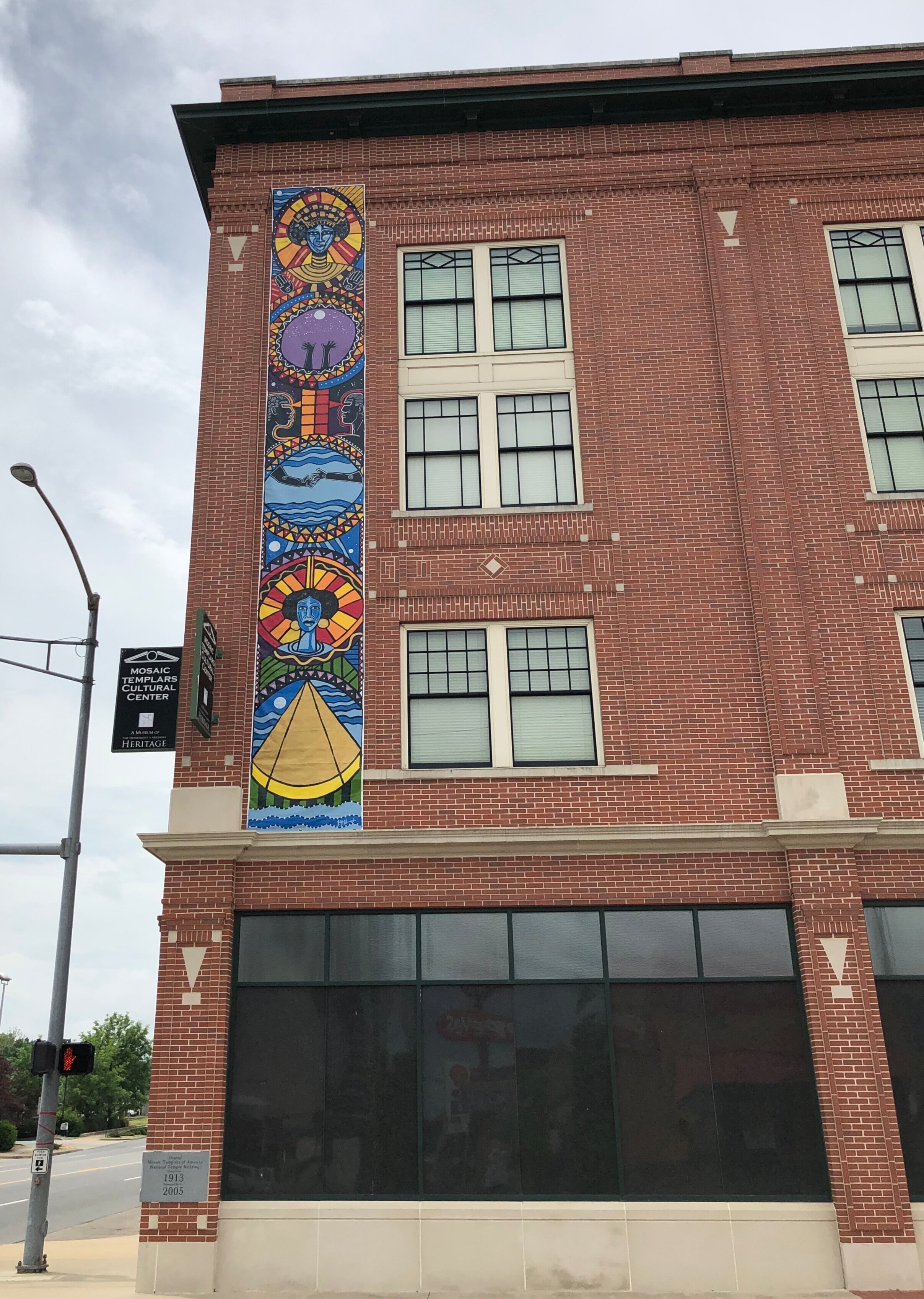
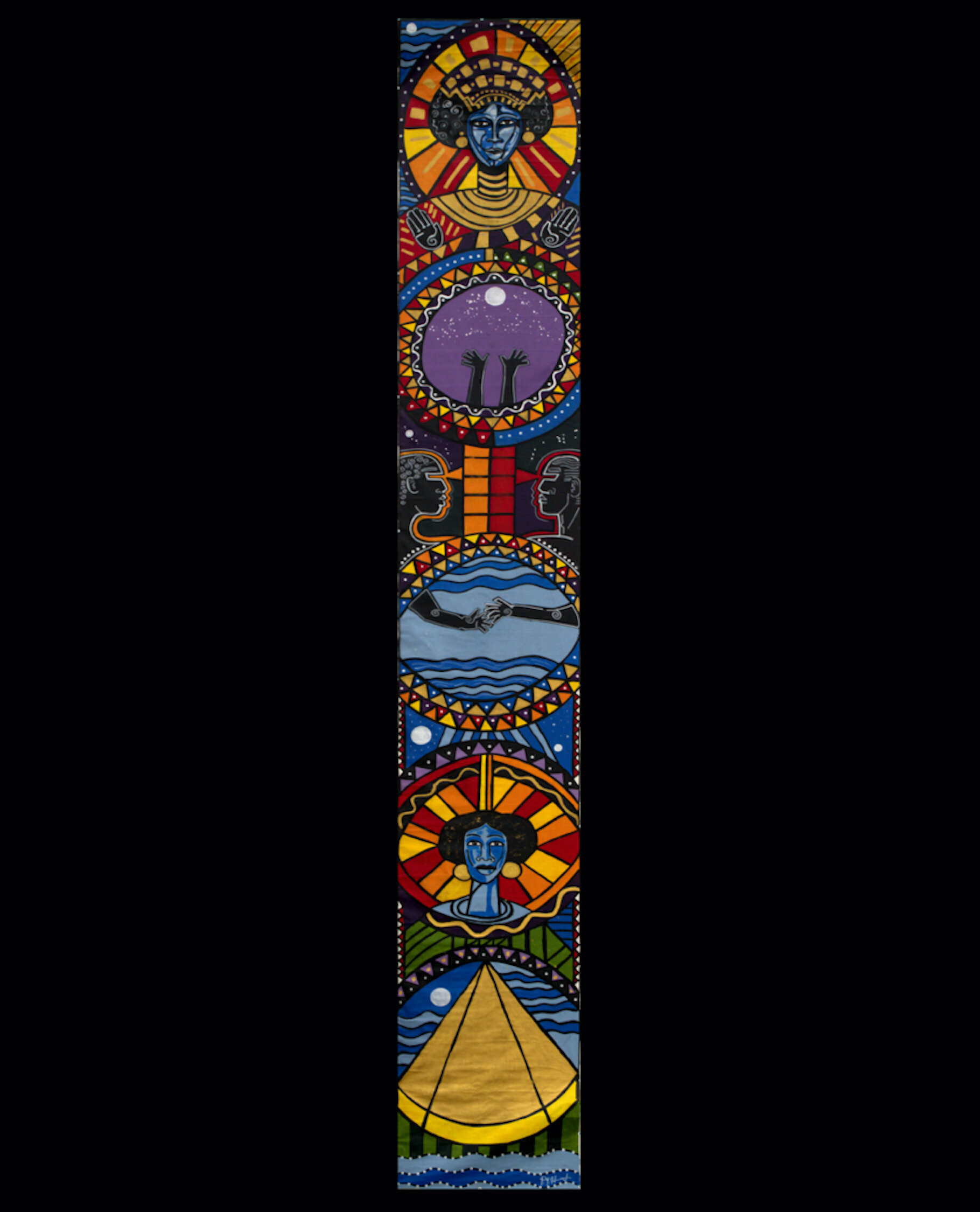



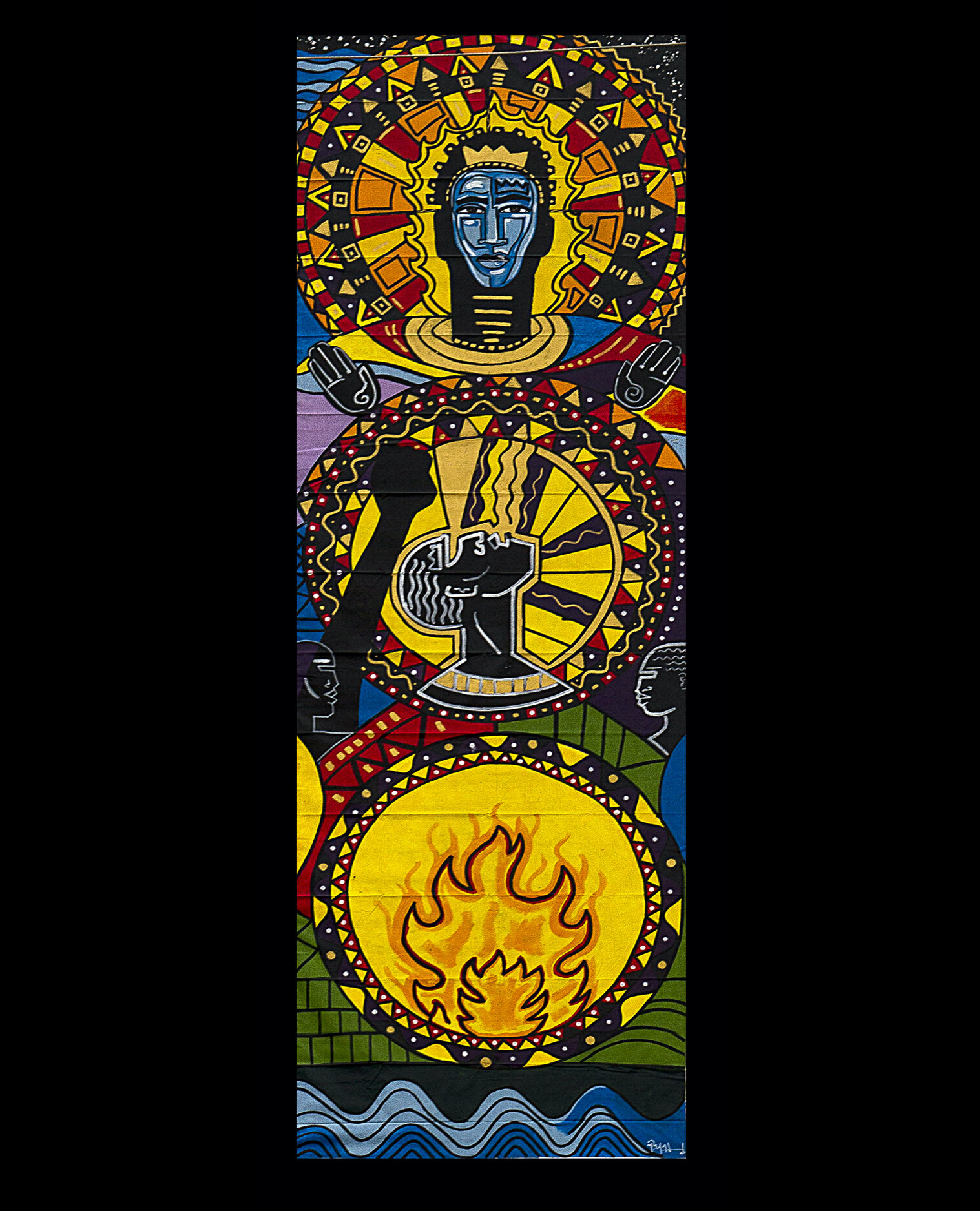

AAS: Many of your pieces are very large. Where do you do most of your painting?
PH: I mostly produce my smaller works in my home studio space, but I am fortunate to have been able to find an affordable and comfortable studio space at The Bodark Creative here in Little Rock. I am able to spread out my workspace a bit more and bring all of my tools and supplies to whatever project I am working on and stretch my imagination a bit more. At Yella Dog Press in the same building, I work with Kate Askew in her letterpress print shop to produce limited editions of my linoleum blocks.
“When I was a kid, I just knew that I wanted to be creative and have interesting stories to tell people about my life and my experiences.”
AAS: Talk about HurdWiredStudios.
PH: HurdWiredStudios is the name of my business (LLC) that I just started in 2019. So far, it is a one-man fine art operation where I create and sell my work, but I hope to one day soon expand it into a physical place where young artists can come to learn about art and be mentored. I am in the process of building connections with local schools and community youth programs to see how HurdWiredStudios can help them encourage and inspire younger creatives to explore their artistic side. I can see how young people nowadays are mostly influenced by the style of anime. It is very popular and all over the place for them to see. But I would like to encourage any and all of the young people that I would mentor and teach to try to explore all drawing and painting styles of art and to work on their technique to try to find their own visual language and voice. I believe that that's what people are looking for, and that's what the art world needs most.
The Crystal Bridges linoleum block printing demo in 2018. (photo courtsey of Ebony L. Blevins photography)
AAS: I admire your efforts in trying to expose young people to art and to making art. Talk about the printing demonstration you did at Crystal Bridges. From the photos I saw from the event, it was a great turnout and the kids (and adults) seemed to have a great time making prints.
PH: In 2018, I was contacted by Carly Sandidge, the Museum Store Manager at Crystal Bridges to participate in the regional Artist program there. She had seen some of my hand-pressed notecards on my Instagram page and wanted some of my work in the store. A few months later, she asked me to do a linoleum block printing demo at Crystal Bridges. The next year, we did another demo. It is one of my goals to one day make it into the permanent collection there. I have a lot of work to do, and I am here for it.




